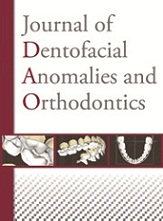Article contents
Relationships between parents and children with labio-palatal clefts: the importance of a delay preceding the first surgical repair
Published online by Cambridge University Press: 08 December 2011
Abstract
Any attentive observer of families who have a child afflicted with a cleft lip whether or not associated with a palatal cleft would be certain to be impressed by the importance of the psychological context of their interpersonal exchanges and the risks of a breakdown in the parent-child relationship adversely affecting the child’s development. The birth of a child with a cleft lip inevitably becomes a painfully stressful and traumatic event for its parents.
In the framework of the Programme Hospitalier de Recherche Clinique (PHRC) we have evaluated the psychological perceptions of parents of cleft lip and palate patients during the child’s first year of life in a multi-disciplinary and multi-group prospective study. Our goal is to analyze both the child’s psychic suffering and the parent-child relationship. We compared the results obtained in four hospital centers using different surgical protocols, distinguishing between the sub-groups of parents who had learned of the defect from an in utero examination and parents who did not become aware of the cleft until the child was born.
We analyze for the parents the psychic and psychological dimensions of the deformity and its correction, touching on the importance of a prenatal diagnosis, the development of a relationship with the child, self-images, and the quality of life as well focusing on the infant’s distress and eventual recovery from it. The results of this study should make it possible for health care workers to construct new ways of attenuating, insofar as possible, the psychological impact of the deformity on parents and their children and to improve long term care for these patients.
- Type
- Research Article
- Information
- Journal of Dentofacial Anomalies and Orthodontics , Volume 14 , Issue 3: Labio-maxillary-palatal clefts , September 2011 , 304
- Copyright
- © RODF / EDP Sciences
- 1
- Cited by




